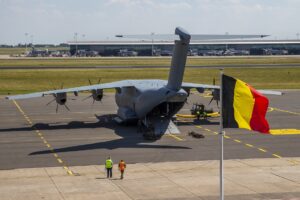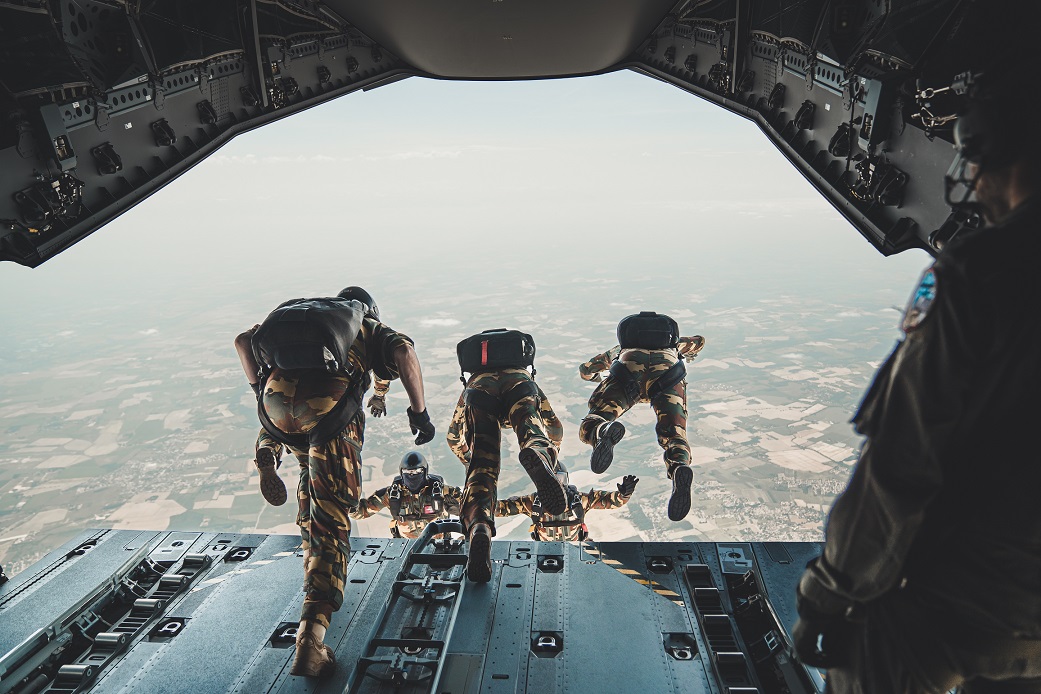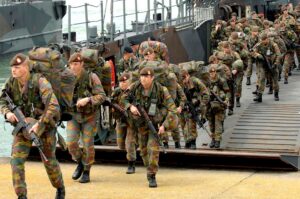One of the perks of being a Belgian academic dealing with defence is that I am regularly invited to change-of-command ceremonies of units of our armed forces. These occasions offer opportunities to observe the object of my studies and to speak with the soldiers who do what I write about.
Yet sometimes, parts of the parade or show in these events are cancelled because the troops and the equipment are deployed on active duty and hence unavailable. These incidents reveal the high operational tempo of a small professional army. Belgian soldiers have been, and are present, in all theatres where European troops have operations, whether under the flag of the European Union, NATO, the United Nations, or an ad hoc coalition.
Such cancellations also expose Belgium’s lack of depth. Stocks and supplies of all kinds are limited, and there is only just enough equipment to go around. Indeed, all too often, there is not enough. And then operations logically take priority over parades.
After Russia’s invasion of Ukraine, most EU member states and/or European NATO allies began allocating additional funds to replenish stocks. Belgium also moved quickly, announcing €1 billion in extra military spending. And, like its allies, Belgium transferred substantial arms and ammunition to Ukraine.
The most important decision was announced the day after the war started, although it had been long in the making already. This is the STAR Plan, for Security, Technology, Ambition and Resilience. It is a government investment of €10.3 billion in capabilities to boost the defence budget to 1.54% of GDP by 2030.
Given that just a few years ago, the Belgian defence budget barely reached 1% of GDP, it is no exaggeration to say that the country’s defence policy has undergone a complete reversal. While this is still below NATO’s 2% target, it is an extraordinary budget hike. And more important than the 2% is that Belgium now is set on a structural growth path.
This reversal comes after decades of defence cuts that followed the end of the Cold War: the presumed end of great power rivalry prompted a peace dividend, allowing governments in Europe to reinvest in other fields.
Now, however, reality has bitten back. Belgium, like others, recognises that the threats are still out there. Indeed, after years of decline, the previous Belgian government already agreed in 2018 to a large-scale reinvestment that included the acquisition of 34 F35 combat aircraft, among others.
The current investments include so-called traditional capability areas, notably the total re-equipment of the army’s motorised brigade, with French armoured vehicles, and the replacement of the navy’s two frigates. But it also concerns other domains: the military intelligence service will be strengthened, and a brand new (defensive as well as offensive) cyber component will be created.
Complex defence calculations
Still, Belgium, like other European states with forces of similar size, is facing some complex decisions.
For almost three decades, many Western European countries have mostly been engaged in operations abroad, from the Sahel to Afghanistan and many theatres in between. They have tailored their armies to that end, notably their land forces.
Now, as Russia has shown all too grimly, territorial defence and deterrence have become urgent priorities again. This means sending troops to NATO allies that share a border with Russia: Belgian forces have been present in the Baltic for years and in March deployed to Romania too.
But it also means the ability to secure your own territory. Belgium is strategically placed: not only does it host the headquarters of NATO and the EU, but the ports of Antwerp and Zeebrugge also are the main logistic hubs for American and Canadian reinforcements arriving in Europe.
At the same time, Belgium cannot assume any let up on foreign operations: security crises will inevitably occur in regions outside Europe that threaten our interests. Indeed, since Europe will now have to find suppliers for the energy it no longer sources from Russia, it has an even higher stake in stability in other parts of the world.

An A400M in Melsbroek military airport © Belga
All European countries, including Belgium, need to settle on a delicate mix of capabilities. While frigates and fighter jets can be deployed both for collective defence and foreign operations, land armies should include the heavier forces needed to defend Europe and the lighter forces that can be deployed elsewhere (such as Belgium’s Special Operations Regiment).
Hence the suggestion that Belgium should create a second army brigade, with heavier equipment than the existing one. And if Belgium sets up a second brigade, it needs to find soldiers.
The government has already begun its recruitment drive. For the first time since 1993, when conscription ended, it has authorised an expansion of the armed forces, from its current 25,000 to 29,000 by 2030 (by comparison, conscripts aside, the force counted 45,000 career soldiers in 1993). It will be a challenge to find these 4,000 skilled men and women, in addition to the regular recruitment to replace retiring and other outgoing personnel.
Cooperation and coordination
However, Belgium does not have to do everything on its own. It has a long tradition of cooperation with fellow EU and NATO members that goes beyond joint procurement of the equipment. It also involves permanently anchoring Belgian units in multinational formations with units from one or more other countries. This allows countries to harmonise doctrines, to organise joint training and exercises, and to pool or divide labour in areas such as logistics and maintenance.
This sort of defence integration is essential for most European countries, which suffer from both costly military overlaps and gaping holes in national capabilities. Indeed, this year, the EU has taken some vital steps to improve cooperation and ensure cost-effective synergies by consolidating its fragmented defence industry and promoting interoperability.
Such integration does not allow a country to spend less; it is about using current and increased funds more cost-effectively. Nor does it mean that a country gives up certain capabilities - as in, “I have a navy and you have an air force”. Rather, the aim is the opposite: cooperation allows Europe’s armed forces to maintain a wider range of capabilities.
A country like Belgium should have a significant combat capacity in army, navy, air force, and cyber. That way, the government can contribute to every scenario it wants to contribute to. Abandon one of these, and Belgium would quickly end up in a scenario in which it wanted to participate but found itself without any relevant capability – and thus without political relevance.
The Belgian navy has already integrated with its Dutch counterpart. The motorised brigade has also embarked on far-reaching cooperation with France; a second brigade would be set up in the same manner. Belgium’s air force is looking for opportunities to cooperate, notably with the other European countries acquiring the F35.
Belgium has also called on the EU to use its defence instruments to coordinate extra spending by member states. It wants the EU to push member states to enter new capability areas (such as missile defence, armed drones, or offensive cyber) and set up new national units as building blocks of a multinational command from the start.
There will be some growing pains as Belgium rebuilds its capabilities. But for the first time since the end of the Cold War, the Belgian armed forces are no longer on a forced diet.



